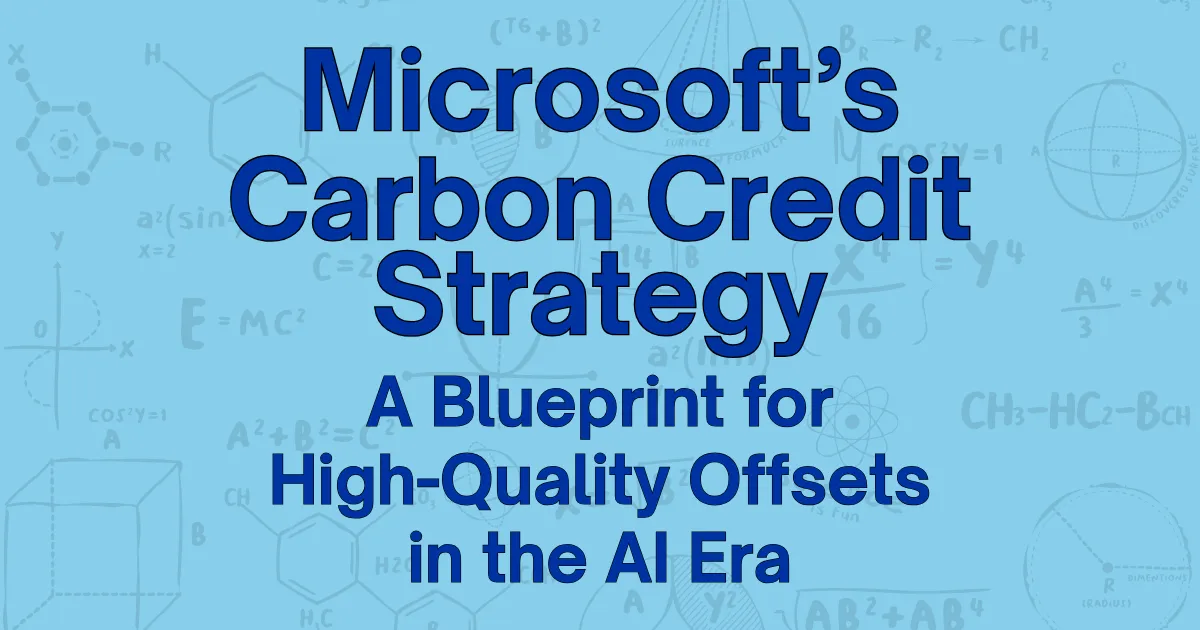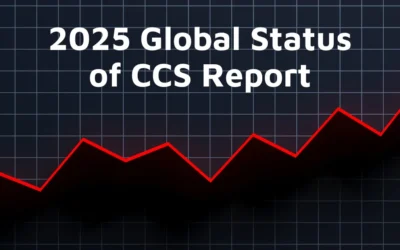Beau Parmenter
In the age of artificial intelligence and cloud computing, Microsoft stands at the epicenter of a digital transformation that consumes staggering amounts of energy – and increasingly, carbon budget. Yet instead of merely acknowledging this paradox, the Redmond giant is rewriting the sustainability playbook.
With a pledge to become carbon negative by 2030 and to erase its historical carbon debt by 2050, Microsoft has catapulted to the front lines of corporate climate action. But it’s not just the ambition of the goals that stands out – it’s the precision of the execution. At the heart of Microsoft’s climate roadmap lies a rapidly growing portfolio of high-quality carbon credits, sourced from projects designed to deliver real, permanent, and verifiable climate benefits.
Carbon Negativity: The Microsoft Way
Microsoft’s sustainability evolution began in earnest in 2020 when it made the bold announcement to not just go net-zero, but carbon negative within a decade. The math is simple: for every ton of CO2 the company emits – whether through data centers, supply chains, or AI models – it must remove even more from the atmosphere.
To meet this goal, Microsoft relies on a two-pronged approach: aggressively reducing its own emissions through electrification, energy efficiency, and renewable power, while offsetting the rest with carbon removals. Not just any removals, but those that meet high standards of permanence and traceability.
Strategic Investments in Carbon Removal
Microsoft has become one of the world’s most influential buyers of carbon credits. But unlike many companies dabbling in offsets as an afterthought, Microsoft is intentionally shaping the market.
🔹 Chestnut Carbon
Microsoft recently signed a deal to purchase more than 7 million tons of carbon credits from U.S.-based Chestnut Carbon, a company using advanced modeling and satellite imagery to manage afforestation and soil regeneration projects across the Southern U.S. (Source)
🔹 Re.green
To offset emissions tied to AI infrastructure, Microsoft inked a 25-year agreement with Brazilian startup Re.green, focused on restoring degraded areas of the Amazon and Atlantic forests. These credits come with strong biodiversity and community benefits. (Source)
🔹 AtmosClear
One of Microsoft’s most future-forward moves was signing an $800 million deal with AtmosClear to secure 6.75 million tons of carbon removal via bioenergy with carbon capture and storage (BECCS) – a solution that burns biomass for energy while capturing and burying the resulting CO2. (Source)
Defining High-Quality Carbon Credits: Why Dynamic Matters
As companies race to net-zero, the quality of their carbon credits is under the microscope. It’s no longer enough to buy the cheapest offsets. Investors, regulators, and the media are demanding proof that those offsets are real, long-lasting, and not just a shell game.
🔸 The Core Pillars of Quality
High-quality carbon credits must meet a set of strict criteria:
- Additionality: The project only exists because of the carbon credit revenue.
- Permanence: Carbon stays out of the atmosphere long-term (decades to centuries).
- Measurability and Verifiability: Data must be quantifiable and independently audited.
- No Double Counting: Each credit is unique, traceable, and retired after use.
- Co-Benefits: Social, environmental, and economic value beyond just carbon.
This is where Dynamic Carbon Credits are carving out a bold new path.
🔸 Dynamic Carbon Credits: Carbon Sequestration That Lasts
While much of the market still relies on forestry-based credits, Dynamic Carbon Credits (DCCs) champion a tech-enabled alternative: plant-based biochar systems that turn agricultural and organic waste into ultra-stable carbon.
This isn’t theory—it’s already in motion. DCCs emphasize local deployment near emission sources, making them more sustainable and less prone to transport emissions than global offset schemes.
✅ Permanence with Purpose
Biochar is a charcoal-like material made through pyrolysis, which locks carbon into a solid form that resists decomposition for hundreds to thousands of years. When buried or integrated into soil or construction materials, it effectively removes carbon from the cycle.
✅ Built-in Verification
Unlike some offset schemes with opaque reporting, DCCs are designed from the ground up for MRV—Monitoring, Reporting, and Verification. Each credit is linked to real-time sensor data, satellite validation, and blockchain-based registries.
✅ Local Impact
Dynamic Carbon Credits produce measurable co-benefits: improved soil health, reduced fertilizer use, drought resilience, and higher agricultural yields. They also empower local economies by building small-scale carbon removal hubs across rural and industrial zones.
Comparing Carbon Credit Integrity
Dynamic Carbon Credits: A Better Way Forward
At Dynamic Carbon Credits, we’re redefining what it means to offset emissions. Unlike traditional offset providers, we focus exclusively on carbon removal—physically extracting CO2 from the atmosphere and storing it permanently. Our portfolio includes innovative solutions like biochar, regenerative agriculture, and DAC, all designed to deliver measurable and lasting climate benefits.
Take biochar, for example. This plant-based solution sequesters carbon in a stable form for centuries while improving soil health and agricultural productivity. For every ton of biochar produced, approximately 3.67 tons of CO2 are removed from the atmosphere. It’s a cost-effective alternative to DAC, offering high integrity at a fraction of the price.
Our commitment to transparency sets us apart. Every credit we issue is backed by blockchain technology, ensuring it’s traceable from issuance to retirement. This eliminates the risk of double-counting and provides corporations with a clear audit trail – critical for maintaining credibility with stakeholders.
How Corporations Can Avoid Greenwashing
The path to net zero is fraught with challenges, but greenwashing doesn’t have to be one of them. By prioritizing quality over quantity and partnering with reputable providers like Dynamic Carbon Credits, corporations can achieve their sustainability goals without compromising on integrity.
Transparency is key. Companies should be open about the types of credits they purchase and the projects they support. Detailed reporting and third-party verification build trust with stakeholders and ensure that every credit delivers measurable climate benefits.
It’s also important to focus on carbon removal rather than avoided emissions. While renewable energy offsets can play a role in reducing emissions, they don’t address the need to physically remove CO2 from the atmosphere – a critical component of achieving net zero.
The Path Forward
The fight against climate change requires more than good intentions – it demands bold action and unwavering integrity. By addressing greenwashing and prioritizing high-quality carbon credits, we can build a carbon market that drives real progress toward net zero.
At Dynamic Carbon Credits, we’re proud to lead the way. Our solutions are designed to deliver measurable and lasting climate benefits, helping corporations achieve their sustainability goals while maintaining transparency and accountability. Together, we can create a sustainable future – one high-integrity credit at a time.






